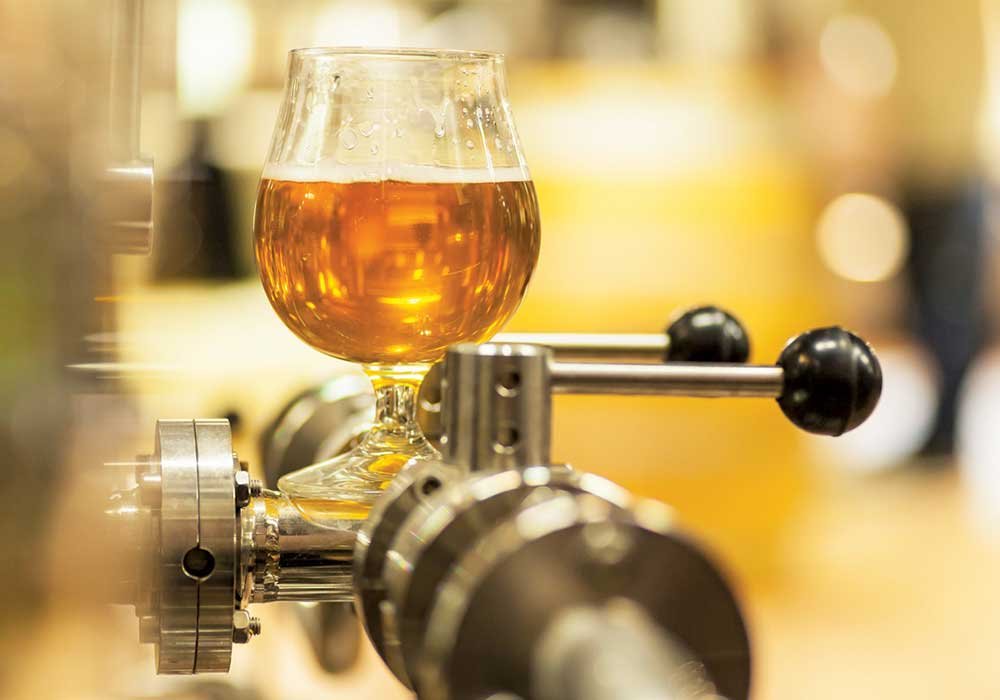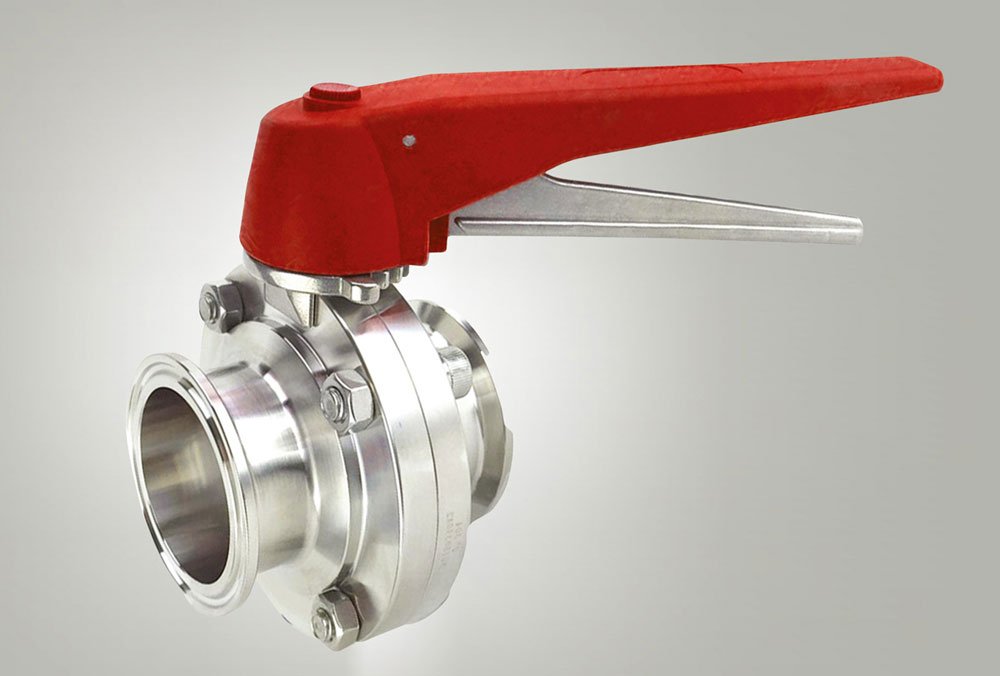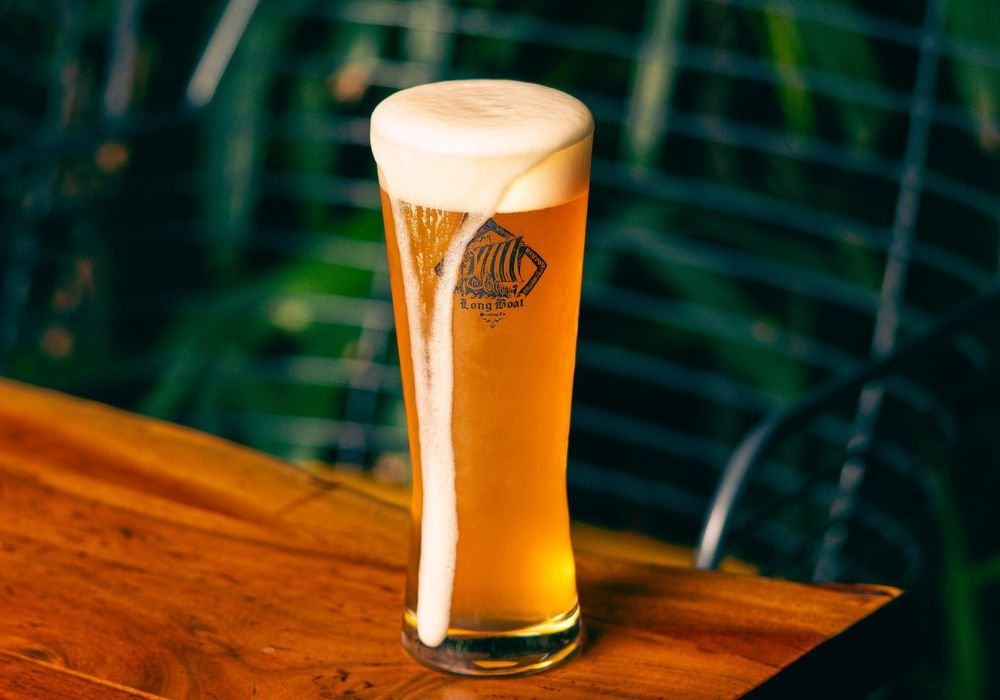Brewery valves – keeping the Beer flowing

tameson.com
Keeping your beer flowing, or not flowing, when needed is crucial to every brewery operation. To accomplish this, valves are used and are considered the on-off switch of a brewery. Whether you have a brew house or a home-made setup, accurate control of the flow between tanks and brewing steps ensures a high-quality beer. Understanding different valves used in brewery applications and selecting the correct ones for each flow type will keep your beer clean, consistent, and of course the intended flavour for the masses to enjoy.
What is a valve?
A valve is a mechanical component that controls and regulates a liquid, mixture, or gas (often called the medium) flow by opening, partially opening, or closing the path of the flow. The flow moves through the valve from an area of high pressure to an area of low pressure, otherwise, it is pumped through in the intended direction. Depending on the flow characteristics (medium, viscosity, temperature, etc.) certain valve types are better suited than others. The method of controlling the valve and the internal mechanical components change from one valve type to another. For example, typically a different valve would be used for regulating a gas line (needle or ball valve) versus a beer product line (butterfly valve).
Automatic vs Manual
The process of controlling a valve can be done manually or automatically, depending on the sophistication of the brewery, product , and electronics. Typically, a craft brewery or a home-made setup will have manual valves. These are controlled by simply rotating a lever or knob from the closed (perpendicular to pipe) to open (parallel to pipe) position. Often, there are locking mechanisms to lock the valve in the desired position. Locking mechanisms can vary, but are often either a pull handle, position handle, or a locking slide for a nut. Automatic valves are either controlled electrically or pneumatically and are often connected to a programmable logic controller (PLC). This gives the brewer full control of a brew house from a centralized location and the entire brewing process could be automated.
Direct vs Utility Valves
The food and beverage processing industry divides valves into two different classifications: direct contact and service utility valves. A direct contact valve comes into direct contact with the beverage during the brewing process (an example being the racking arm). A utility service valve does not come into direct contact with the product (an example being a gas valve for a burner). Knowing the step at which a valve is implemented will help determine the type of valve, material needed, and if the valve needs to be cleaned regularly.
Valve Types Used in Breweries
Throughout the brewing cycle, numerous different liquids and gases are brought in and out of the tanks. Depending on the step and design of the brewery equipment, different valves are used to correctly and safely move the flow. Typically, throughout a brewery’s equipment you will find a mix of butterfly, ball, globe, gate, check, needle, diaphragm, and solenoid valves. Each valve has their own advantages and disadvantages for different
mediums.
Butterfly Valve
A butterfly valve is one of the most commonly used valves in breweries for direct contact with the product. When the valve’s handle is rotated, internally a stem rotates the disc, or wafer, from the closed to open position. Due to the stem in the middle of the valve, it does cause an obstruction to the flow. Butterfly valves can be compact, have good hygienic design, good sealing properties, and are easily cleaned making them a preferred option for a direct contact valve. However, these are not meant for high pressure applications and due to the stem often times thicker mediums (wort) can cause a build-up of contaminants that will need to be cleaned. For tanks, they are typically used on the clean-in-place (CIP) line, blow off arm, racking arm, and bottom blow out. They offer good hygienic design for a brewhouse to precisely control the flow from one tap to another.


Normally closed Solenoid Valve
A solenoid valve is used as both a service utility and direct contact valve for automated processes or for safety considerations. It operates by the solenoid, an electric coil, receiving the operating voltage creating an electromagnetic field. This electromagnetic field forces the plunger up to open the flow path. When electricity is cut, a spring forces the plunger closed. Due to the quick response time and reliability, the solenoid valve is often used for an automated bottling process. It is also often used as a service utility valve for gas or glycol lines for safety reasons as they can be normally closed (no power closes the valve).
Ball Valve
A ball valve is typically used as a service utility valve but can be used as a direct contact valve if frequently and thoroughly cleaned. They operate by means of a rotary ball having a bore. By rotating the ball, a quarter turn (90 degrees) around its axis with the handle, the medium can flow through unobstructed. Due to the ball design, they are very durable and offer a good seal throughout the valve’s life. However, due to the floating ball and internal bore they require frequent and thorough cleaning to ensure no contamination or bacteria become trapped around the ball in the valve housing. A three-piece ball valve allows for easy inspection and cleaning of all components. Ball valves are often found on gas lines, carbonation stone, water line, or for thicker mediums (wort) as the unobstructed flow will prevent a build-up.Needle valve.
A needle valve is solely used as a service utility valve due to internal threads that can house contaminants and bacteria. They operate by screwing a needle point plunger up and down to precisely control the flow. Due to their precise flow control, they are often used on gas lines and water lines when mixing hot/cold to obtain the exact strike temperature.

Gate Valve
A gate valve is typically used as a service utility valve. It operates by screwing a knob that moves a gate, or wedge, perpendicular to the pipe to seal it off against the gate seat. When open, a gate valve creates an unobstructed flow. However, due to the gate mechanism they are not ideal for high pressure applications and are difficult to precisely control the flow. Therefore, they are typically only used on water faucets within a brewery.
Globe Valve
A globe valve is typically used as a service utility valve. It operates by screwing a knob that moves the stem and plunger down to seal it against the valve body. However, these valves have a high pressure drop as the fluid needs to move through two 90 degree turns from entry to exit when open. They are typically only used on water faucets within a brewery.
Diaphragm Valve
A diaphragm valve is a sanitary solution for a direct contact or service utility valve. It operates by screwing a knob that moves the stem and diaphragm down to seal it against the valve body. There is a high pressure drop, but due to the diaphragm it has great flow control and is a hygienic solution. It is typically used on heat exchangers.
Keeping your beer flowing, or not flowing, when needed is crucial to every brewery operation. valves are used and are considered the on-off switch of a brewery. Whether you have a brew house or a home-made setup, accurate control of the flow between tanks and brewing steps ensures a high-quality beer.
Valve Material
For direct contact valves, the housing is generally stainless steel as it can withstand harsh cleaning agents, won’t leave a metallic taste, is durable, and can withstand high temperatures and pressures. For a service utility valve (water supply or a cooling circuit), brass is suitable as well. For the sealing material, generally EPDM (ethylene propylene diene monomer) is used as it can handle temperatures up to 130°C and is resistant to most cleaning agents. However, PTFE (polytetrafluoroethylene) may also be used for higher temperatures (up to 180°C) and harsher chemicals.
Valve Connections
A valve can be fitted to the equipment either by a threaded connection, flange, or triclamp. A threaded connection is common for service utility valves and are easily assembled. However, they are not a hygienic solution as contaminants can build up in the threads and are not easily removed from the line. A bolted flange connection is a clean solution as there are no threads, but the disassembly process is time consuming. Most commonly used is a tri-clamp connection. They provide a good seal and have an easy assembly/disassembly process for they are connected by utilizing a gasket between the two surfaces that are then clamped together.
Cleaning your Valves
During flow, contaminants and/or bacteria can build up within the valves threads, obstructions, turns, or around a floating ball for a ball valve. It is important to have a frequent and consistent cleaning schedule to ensure you have clean components to prevent contamination of the end product. Due to frequent cleaning, a tri-clamp connection is advised for all direct contact valves. Another consideration when choosing a valve is the ease, or possibility, to fully take the valve apart for cleaning. Ball valves are available as a three-piece design to clean around the ball and often time butterfly valves can be fully taken apart and the seat ring can be cleaned or replaced all together.
Tameson.com – The European Valve Specialist
Tameson.com is the online specialist for solenoid valves, electric ball valves and other electrical valves for both business and private customers in Europe. We offer fast delivery to most European countries. We have more than 10,000 products in stock. Besides our regular satisfied clients, we welcome many new customers every day.
Tameson.com is a subsidiary from the Dutch company Tameson, which has a vast experience in valve technology. Our webshop philosophy has become a great success with Tameson.co.uk in the UK and Tameson.nl in the Netherlands and Belgium. Now we have launched Tameson.com to even better serve our customers in the rest of Europe. The daily management is led by by MSc Paul van Oorschot and MSc Jan-Willem Pustjens.
The concept of Tameson.com simple. On our website you will find very clear information and tools to select the right valve for your application. After you have made your choice, you will receive your order generally within a few business days. And all this for the lowest price on the Internet.



